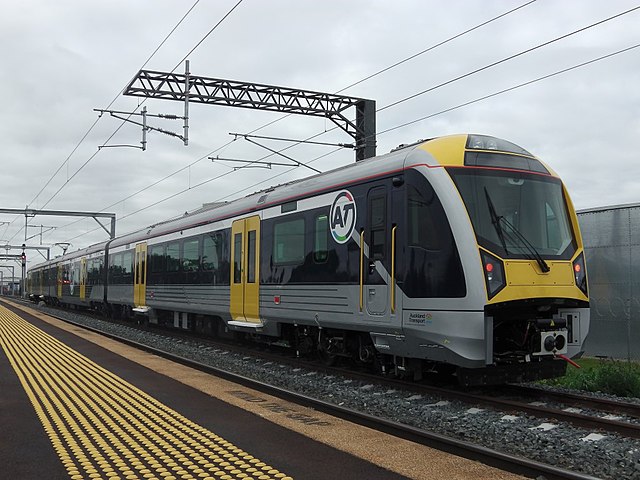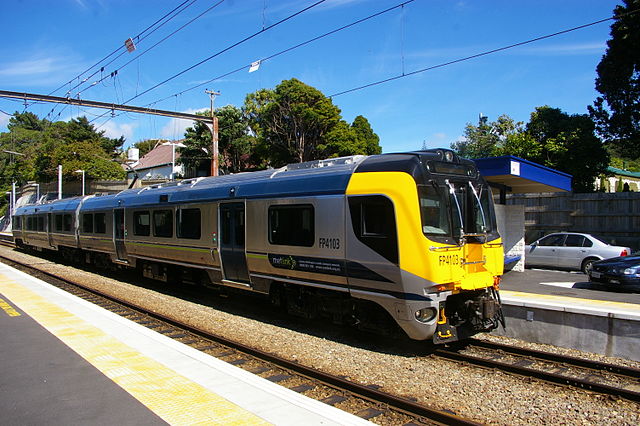Auckland railway electrification
Auckland railway electrification occurred in phases as part of investment in a new infrastructure for Auckland's urban railway network. Electrification of the network had been proposed for several decades. Installation started in the late 2000s after funds were approved from a combination of regional and central government budgets.
A new AM class electric multiple unit at Puhinui in 2013, introduced as part of railway electrification in Auckland.
Rail works preceding electrification, such as the triangle north of Newmarket, incorporated provision for electrification, such as base foundations. Bridge works increased clearances for the catenary.
The same junction as above in December 2010, with some of the traction poles in place. Newmarket Station is just around the corner of the building at right, with the tracks to Britomart going to left of picture. The tracks in the foreground are those of the Western Line.
Railway electrification in New Zealand
Railway electrification in New Zealand consists of three separate electric systems, all on the North Island. Electrification was initially adopted by the New Zealand Railways for long tunnels; the Otira Tunnel, the Lyttelton Rail Tunnel and the two Tawa Tunnels of the Tawa Flat Deviation. Electrification of Wellington suburban services started with the Johnsonville Line and Kapiti Line out of Wellington from the 1930s. Auckland suburban services were electrified in 2014–2015. Electrification of long-distance services on the North Island Main Trunk (NIMT) dates from 1986. New long tunnels, for example the Rimutaka Tunnel and the Kaimai Tunnel, were operated by diesels, and the Otira and Lyttelton Tunnels have converted to diesel operation.
An EO class locomotive as used at Otira at the Ferrymead Heritage Park.
An EM Ganz-Mavag EMU on the Hutt Valley Line near Epuni, 2003
An FP class Matangi EMU at Khandallah on the Johnsonville Line, 2011
The electrification of the central section of the North Island Main Trunk was completed in 1988.







